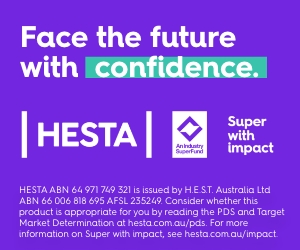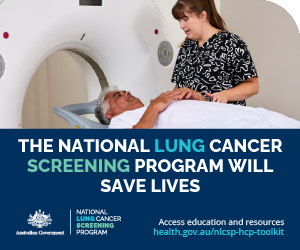The nursing and midwifery professions are currently in a vulnerable position. The workforce is facing critical staff shortages, with a projected national deficit of approximately 85,000 nurses and midwives by 2025 and increasing to 123,000 by 2030 (Health Workforce Australia, 2014).
In light of this, it is critical that creative and innovative solutions are pursued to attract and retain Australia’s largest cohort of health professionals. Nursing and midwifery are recognised as high-stress occupations, with many nurses and midwives enduring chronic stress and employing unhealthy coping strategies to manage their stress. High-stress levels are unequivocally one of the major factors contributing to health impairment, staff turnover and, consequently, staff shortages.
Alcohol as a coping mechanism
Like many in society, some nurses/midwives turn to alcohol as a coping mechanism when stress becomes overwhelming.
Research released this year conducted by Deakin University and the Nursing and Midwifery Health Program Victoria titled ‘Alcohol consumption among Australian nurses: A cross-sectional national survey study’, found problematic alcohol use has increased amongst nurses.
COVID-19 introduced a unique set of stressors that inflamed an already frayed cohort of health professionals who were called upon during the pandemic to care for the community under extreme and unusual conditions. The researchers acknowledge that the climate nurses worked in during this time is likely to have contributed to a rise in high-risk alcohol use. It is imperative that we look to support nurses and midwives facing addiction. One, because alcohol use increases the risk for decreased work performance and patient safety, and two, because supportive measures will likely reduce the rates of poor health, burnout, and turnover. Most importantly, nurses and midwives should not be harmed by their work.
What did the research find?
- In the abovementioned study, it was revealed that 36.9% of nurses engaged in risky alcohol consumption. This finding shows an increase in hazardous alcohol use from previous research conducted.
- Nurses in this study had higher levels of alcohol use than those found in other industries.
- Nurses working in emergency departments consumed alcohol at greater levels than those working in other areas of nursing.
Addiction is common
Addiction can affect anyone, and no one is immune to falling into its grip. A quarter of all Australians will experience addiction at some point in their lives. At the ‘Rethink Addiction’ conference in Canberra in 2022, people passionate about creating change in addiction came together to call for a nationally coordinated response to alcohol, drugs and gambling harm. “Addictions are health and social issues, not criminal issues” was one of the key takeaways from the conference. Stigma and shame prevent people from seeking help with addiction, with it taking an astonishing 18 years on average for people to reach out for support.
A Call to Action
The study calls to action a much-needed reform of the alcohol treatment sector. Only about one-third of Australians who need addiction support can currently access them, with people finding themselves on months-long waiting lists for treatment. The researchers of the study make the following recommendation:
“Our findings indicate that there is a need for targeted strategies and interventions to attempt to reduce high-risk alcohol consumption among Australian nurses. Given the dynamic stresses experienced by the nursing workforce due to the COVID-19 pandemic, it is essential that these strategies are developed as a matter of urgency”.
Programs to support nurses and midwives facing addiction
The Nursing and Midwifery Health Program Victoria is a nurse and midwife-led service initially developed to support nurses and midwives with substance-related health concerns. Last year, the federal government announced funding to expand the case management model to all states in Australia. The ANMF Federal Office is establishing the service funded by the Federal Department of Health and will be known as the National Nurse and Midwife Health Service. The rollout of this service over the next two years will help support a nationally targeted strategy to reduce problematic alcohol consumption among nurses and midwives. With more nurses and midwives having access to a tailored service that prioritises early intervention and support for those with addiction and sensitive health concerns, reducing substance use, burnout, and staff turnover is a likely outcome.
Addiction peer support group
Nurses and midwives in Victoria battling addiction can access a peer support group for addiction run by the Nursing and Midwifery Health Program Victoria. The group’s purpose is to allow a safe, open and non-judgemental space where nurses and midwives with lived experience of addiction can come together to support one another and help reduce stigma and shame surrounding addiction. For anyone wanting to find out more or access this program, please contact the Nursing and Midwifery Health Program Victoria on (03) 9415 7551.
Self Help Addiction Resource Centre (SHARC)
SHARC is another program offered nationally and in Victoria to people with addiction issues. They offer counselling, peer support and a residential recovery program named Oxford Houses, where residents run each house democratically. The ANMF Vic Branch funded one house, especially for nurses and midwives. To gain access to this program, you can contact SHARC directly, or if you are a participant of the Nursing and Midwifery Health Program Victoria, you can be referred.
It’s time we change the conversation around addiction and create a society in which the barriers to support are eliminated so that nurses and midwives with addiction and sensitive health concerns can access high quality treatment in a timely manner, reducing burnout, stress and improving health outcomes.
References
https://jmvh.org/wp-content/uploads/2014/11/Sheard-Pages-from-JMVH-September_web-4.pdf)
https://www.health.gov.au/sites/default/files/documents/2021/03/nurses-australia-s-future-health-workforce-reports-overview-report.pdf
https://www.sciencedirect.com/science/article/abs/pii/S1322769622001883
https://www.sciencedirect.com/science/article/abs/pii/S0376871614019735?via%3Dihub
Author:
Celeste Pinney RM is the Stakeholder engagement co-ordinator and Senior clinician at the Nursing and Midwifery Health Program Victoria








